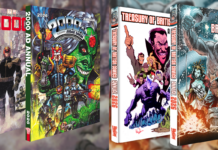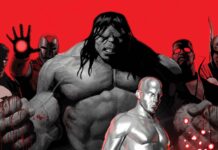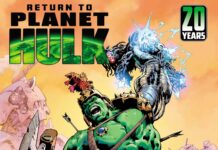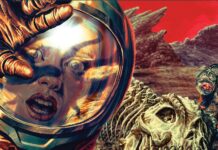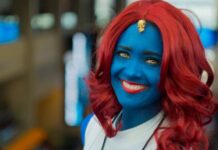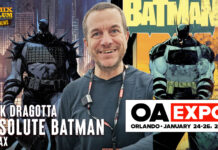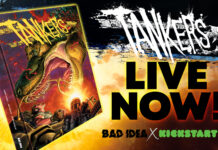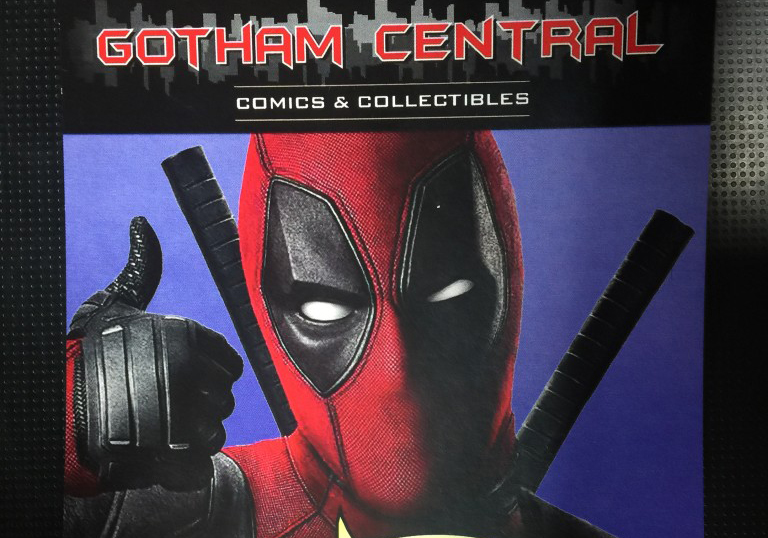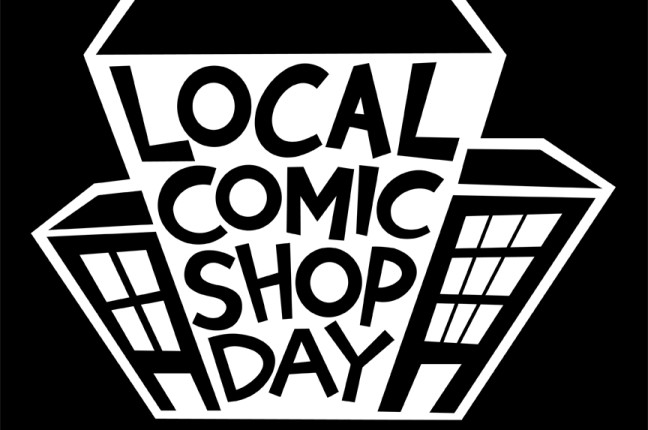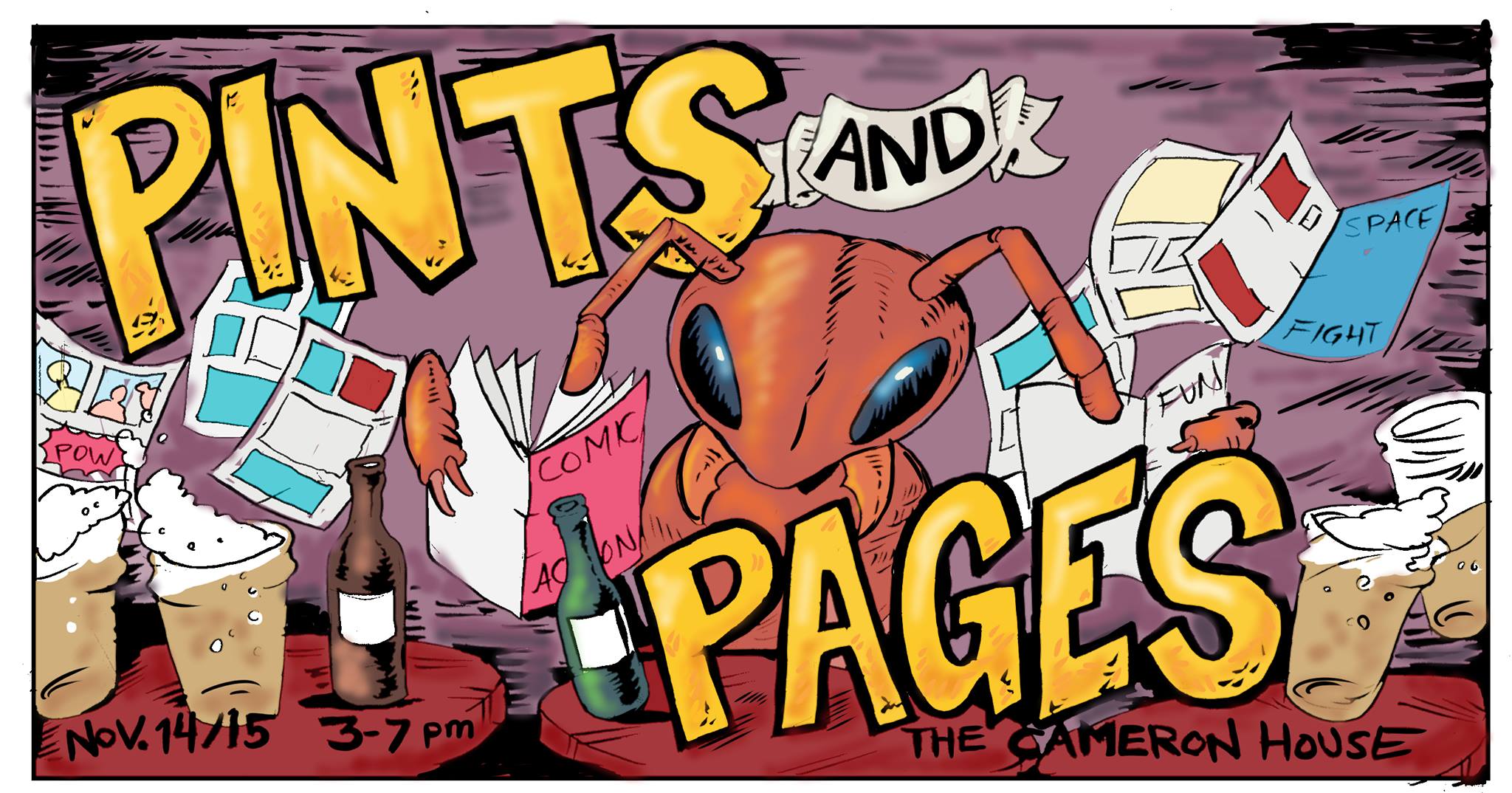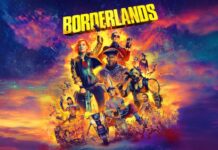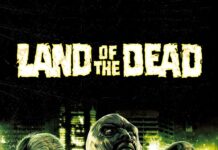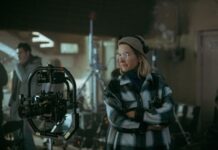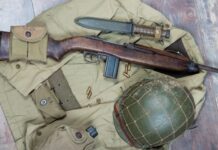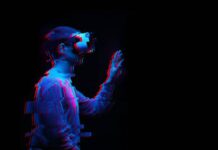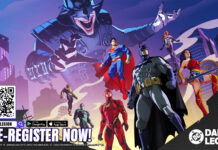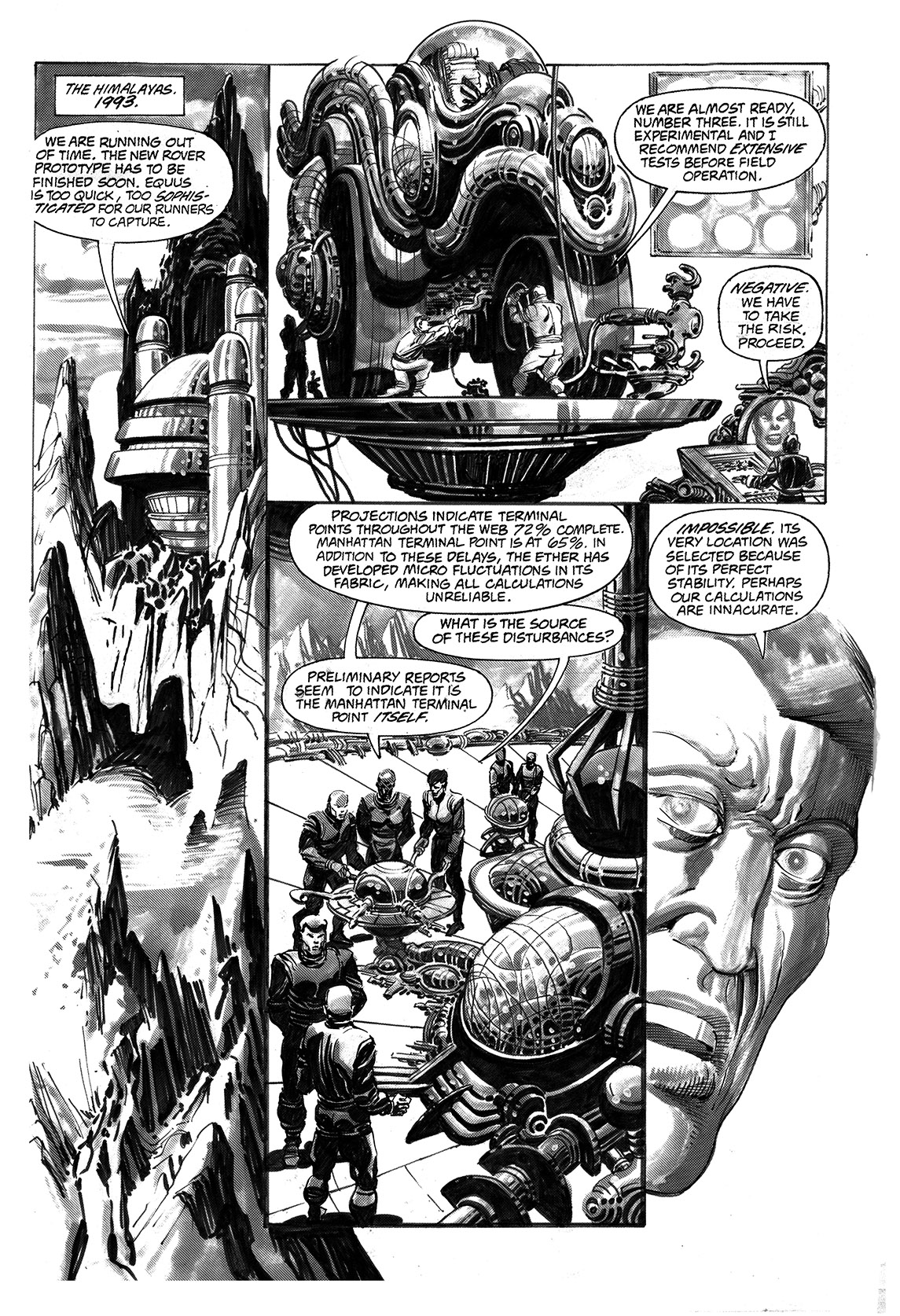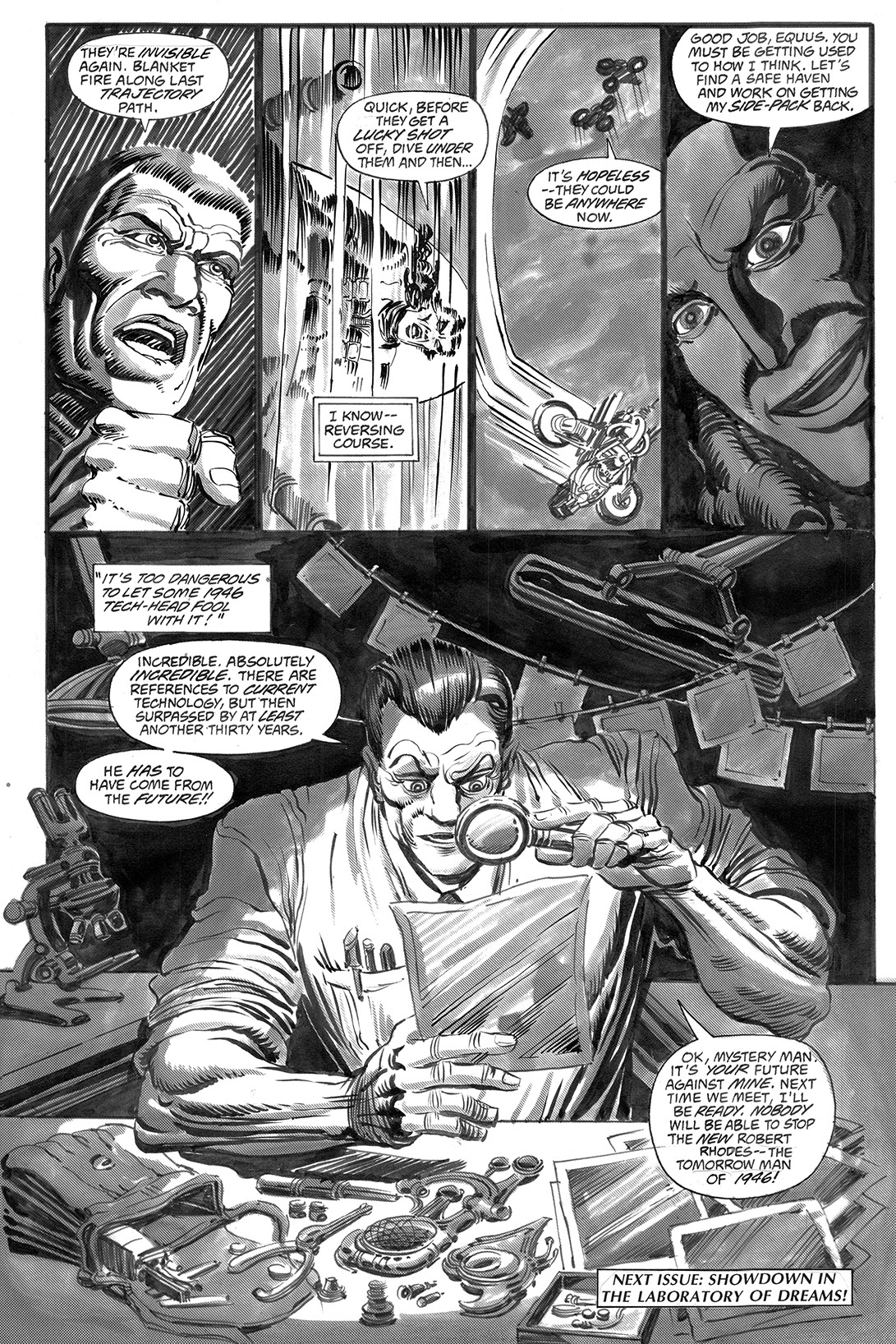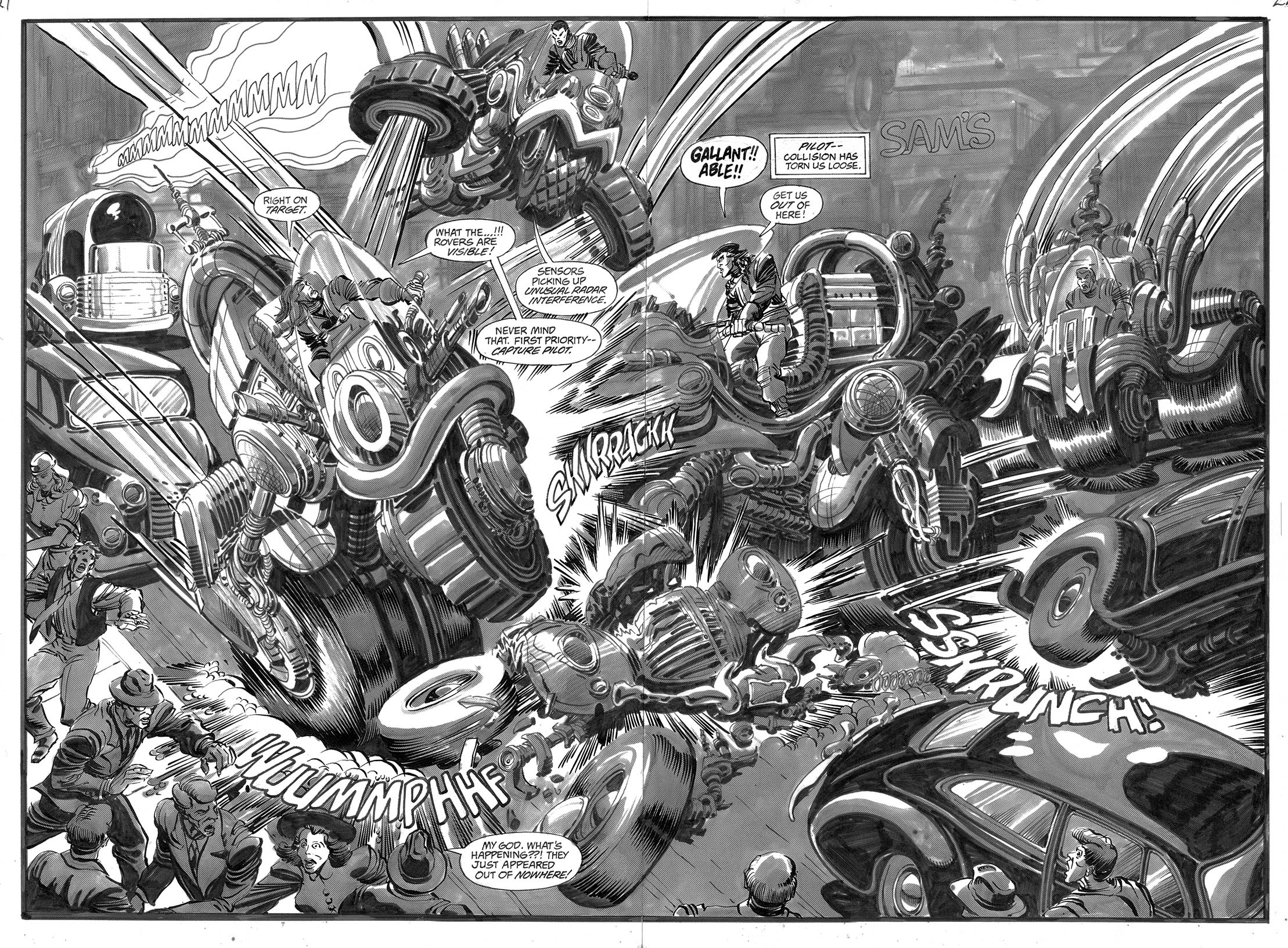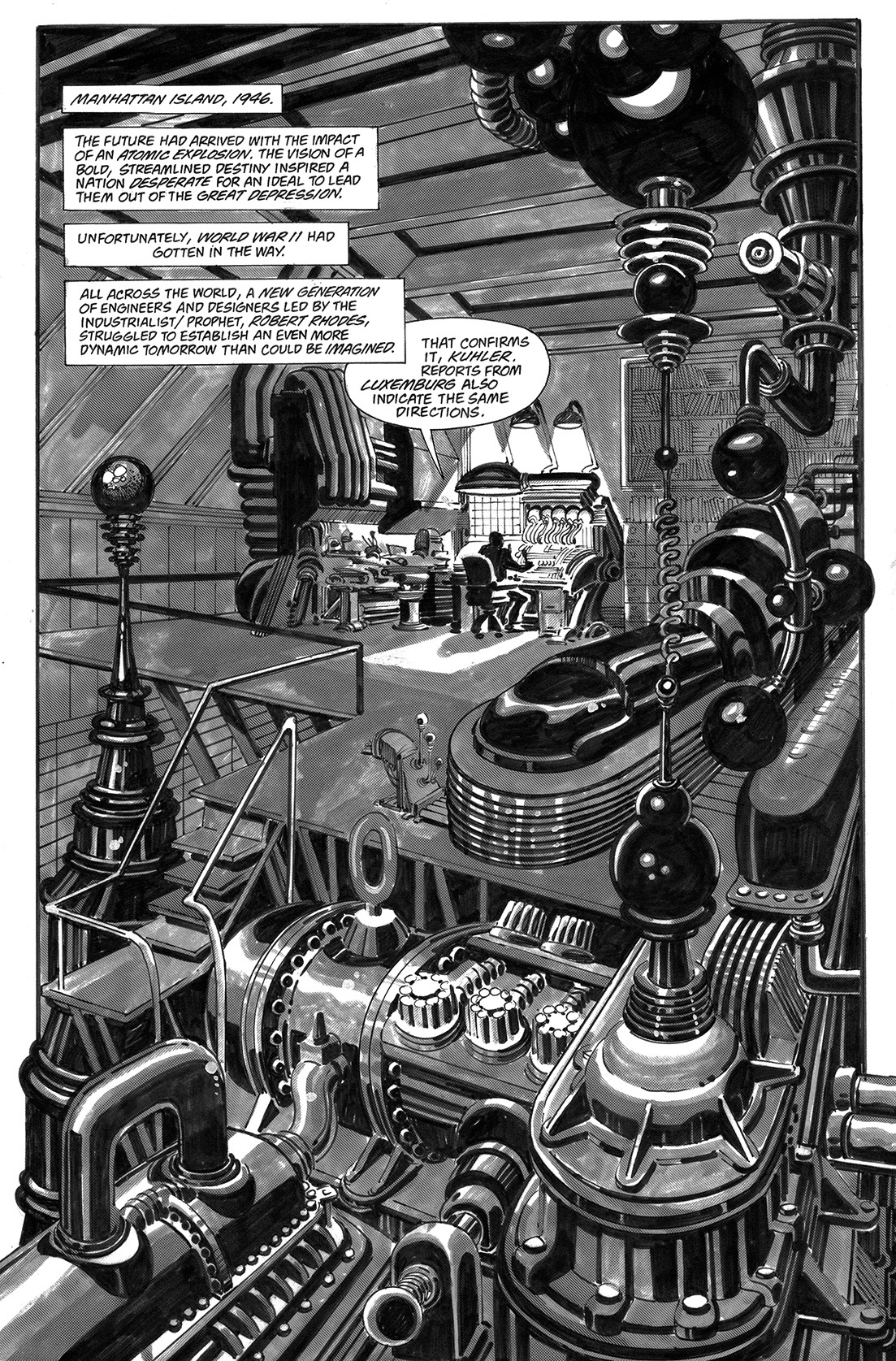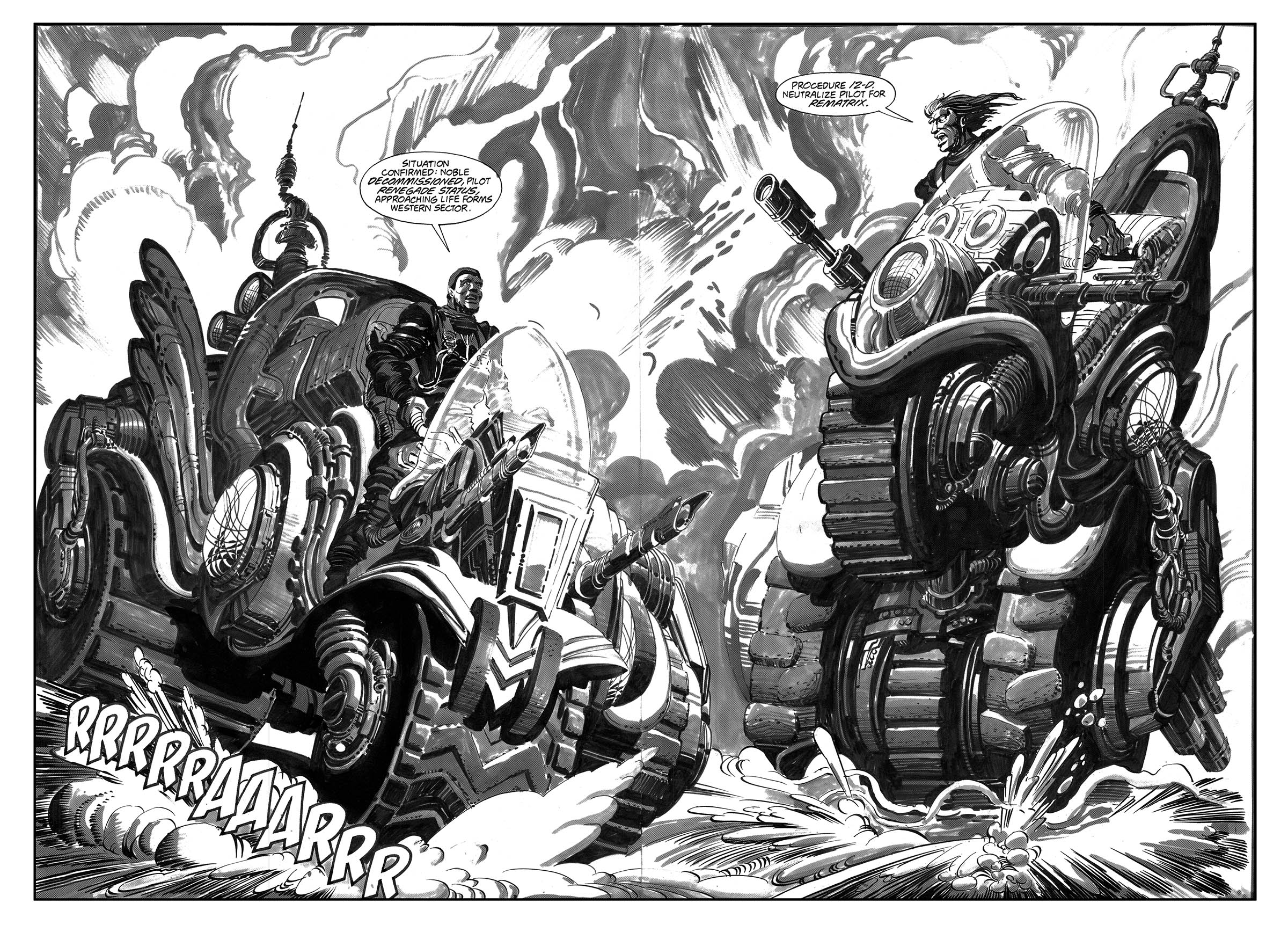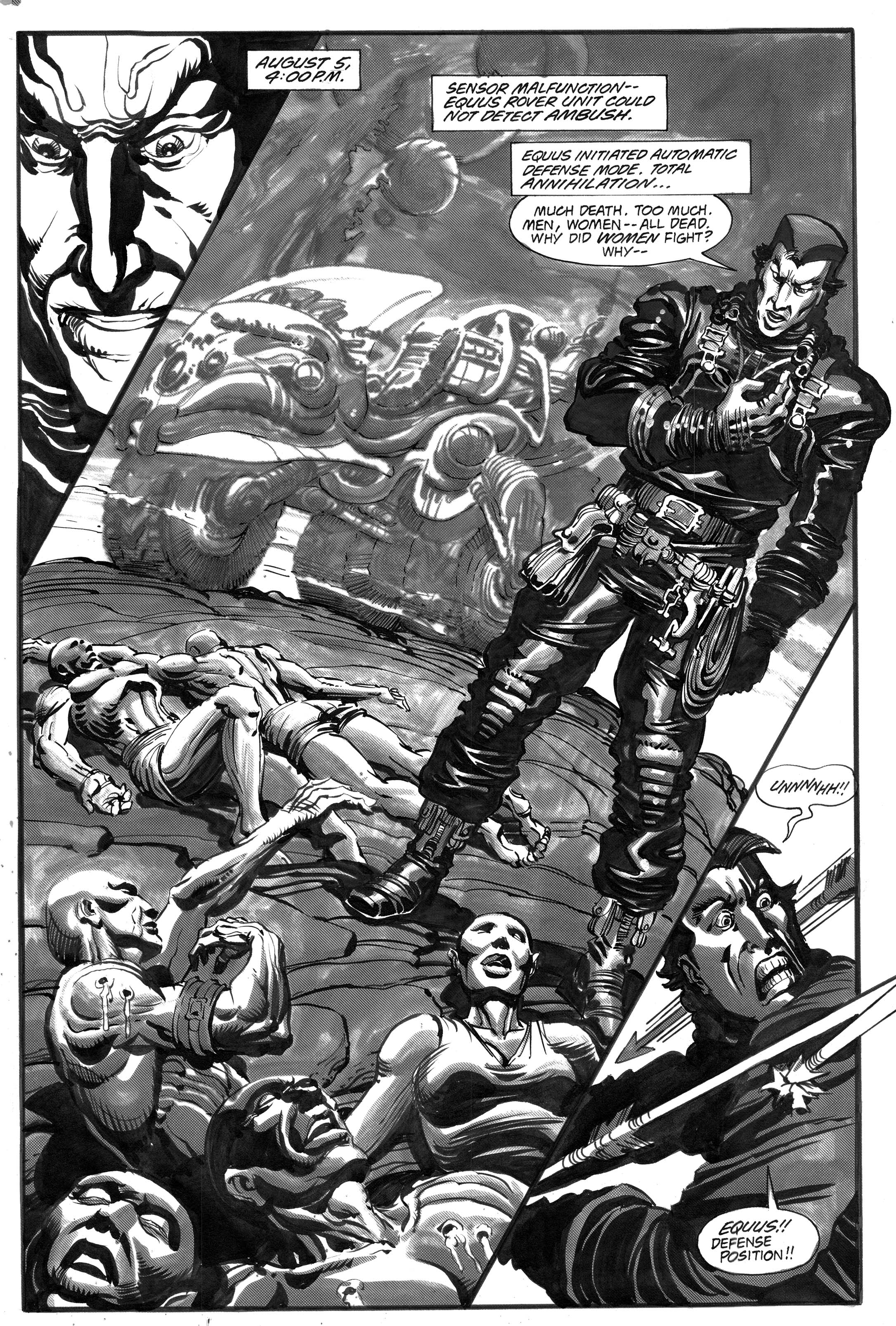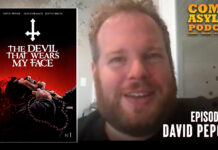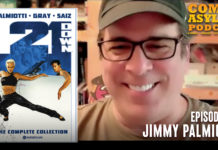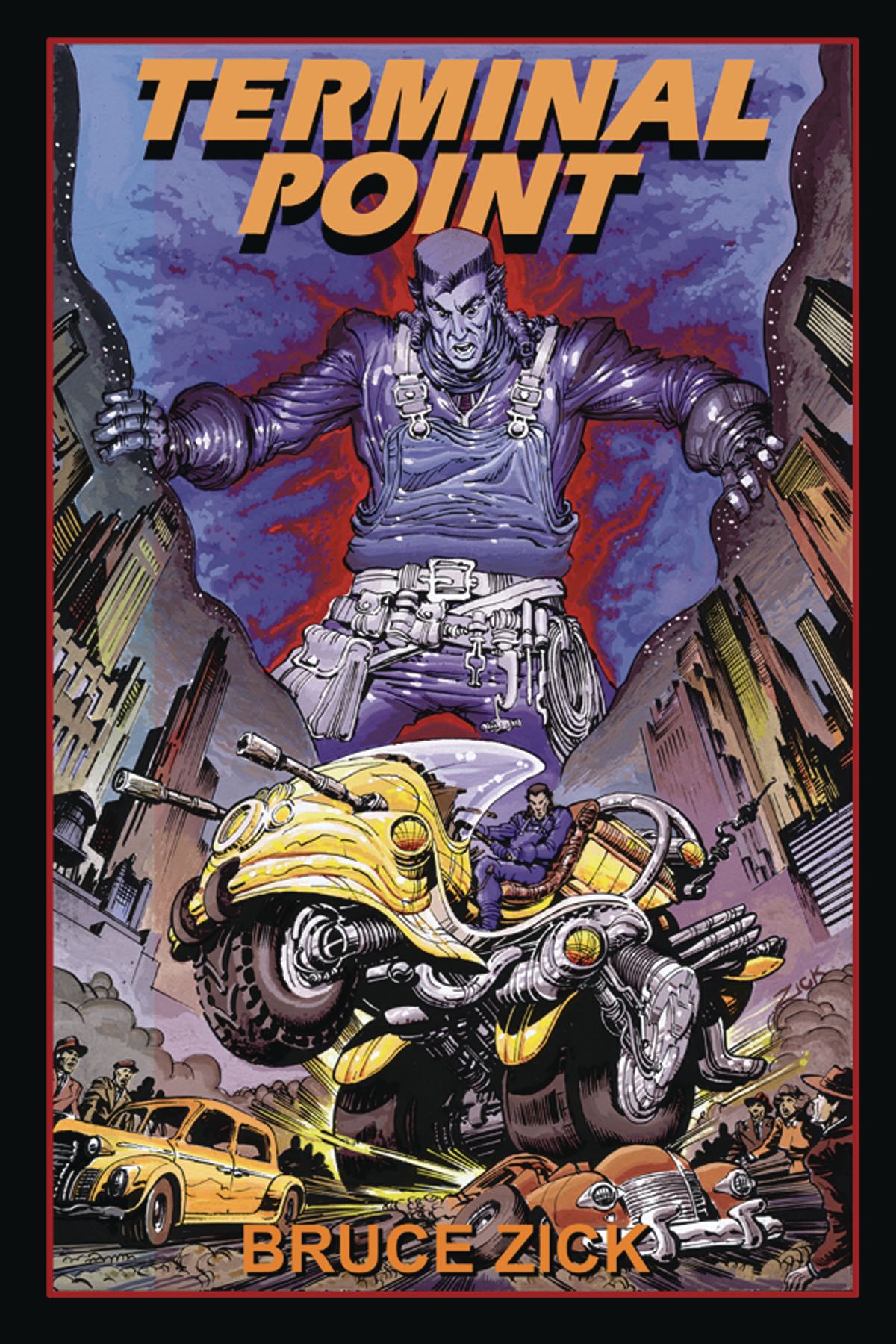 Bruce Zick is back! After the relaunch of his 90’s era comic The Zone Continuum last year, another of Bruce’s creations, Terminal Point is now on newsstands courtesy of Caliber Comics. I recently had the chance to catch up with Bruce to chat about Terminal Point’s reissue, DuoShade art techniques, film noir and upcoming projects.
Bruce Zick is back! After the relaunch of his 90’s era comic The Zone Continuum last year, another of Bruce’s creations, Terminal Point is now on newsstands courtesy of Caliber Comics. I recently had the chance to catch up with Bruce to chat about Terminal Point’s reissue, DuoShade art techniques, film noir and upcoming projects.
SB: Tell us about Terminal Point.
BZ: Terminal Point is a time travel love story. It takes the idea that there is a secret entity called The Terminus Agency who try to control time and space by building these beacons. Looking back now it’s funny because I called it the web in 1993 before it was associated with the World Wide Web as a terminology. I thought, “Oh this is a cool sounding name,” (laughs). So my matrix of time and space is called the web. The agency is building beacons throughout the dimensions and when all of the beacons become activated they connect into a matrix that can control time and space. Terminus employs web runners who use these three wheelers through the web and they are sort of like linesmen working for Western Union. They are out there in the wilderness of dimensions constructing these beacons. One that we focus on is named Pilot. He’s a new prototype of web runner that is tasked with carrying out the Agency’s final plan. He has other plans however. He ends up hiding out in 1946 New York and falls in love with this nightclub singer. So suddenly the story shifts into a film noire setting in Manhattan with nightclubs and men in wide shouldered suits and fedoras. Everything has this punky atomic age retro feel to it. I love film noir movies and just thought it would be a great setting for a science fiction tale where the future meets the past.
SB: You’re a big fan of film noir. What are some of your favorite films in the genre?
BZ: The Maltese Falcon really kicked it off. Another great one is Out of the Past with Kirk Douglas and Robert Mitchum. For me that was a movie that made the trench coat the most beautiful black garment to wear in a black and white movie. I like black and white for aesthetic reasons and then when you see the great cinematography, the crazy movie environments they created and the lighting they used it’s a really dynamic visual form. People are always trying to do a film noir but the person who captured it best, especially in a graphic novel format, is Frank Miller with Sin City. I think those are so brilliant and at the time they came out I didn’t really understand what he was doing. I liked looking at them but it wasn’t until years and years later that I grasped the brilliance of how he understood the use of camera, lighting and the comic book page format. It’s just astonishing work.
SB: How did you come up with the idea?
BZ: Aside from film noir, I was watching a movie called Western Union. It was about the people that were going out in the Wild West stringing telegraph line into the frontier. I was fascinated with the idea of bringing poles and pulling wire into parts of the West that had not been settled yet. It was such a dangerous territory between the Indians, wild animals and natural dangers and these were a handful of people out in the middle of nowhere running that line. I thought it was a great idea to base a story on.
SB: It’s an interesting story with all of the different dynamics with the indigenous people, Pilot and how progress meets what’s already there and the fallout that happens from it.
BZ: And I love retro technology and streamlined 30’s, 40’s machinery. Terminal Point is like future punk meets atomic age retro punk. The scientist who is the nightclub singer’s ex-boyfriend is this brilliant guy of his time. We follow the idea of what happens if he gets technology from the future and can combine it with his brilliance and the technology of the atomic age to become this formidable force of the 40’s that was really never meant to be.
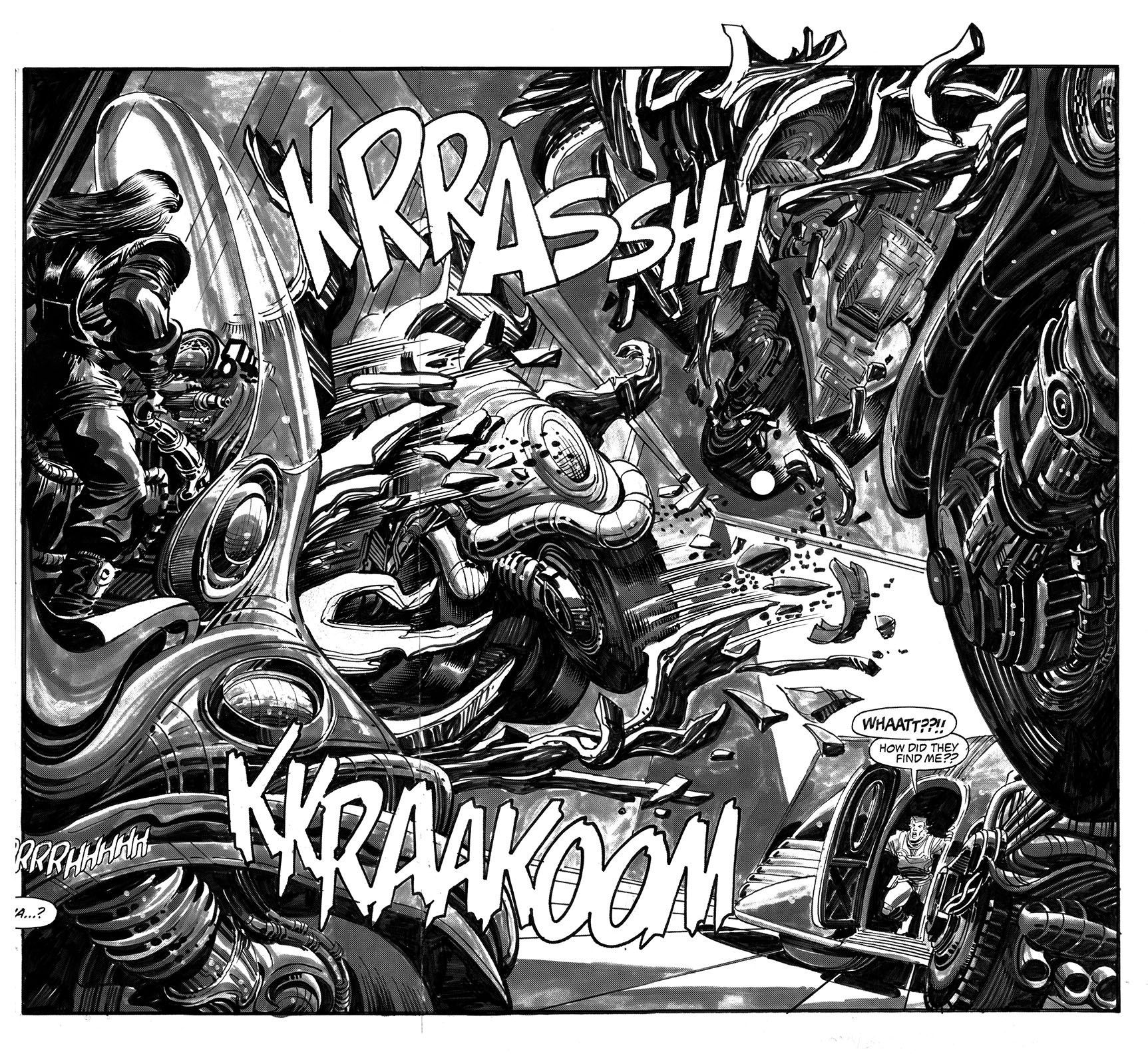 SB: The art technique you used gives Terminal Point a unique look. Tell us about DuoShade.
SB: The art technique you used gives Terminal Point a unique look. Tell us about DuoShade.
BZ: In a sort of interesting and perfect marriage of production style for the project, since it’s based mostly in the 1940’s, I wanted to capture a feel for that era in the book so I used this DuoShade chemically treated paper which was a really popular technique of the 40’s. I think it may have started dying out in the 50’s but if you ever get to look at the first black and white Mad Magazines they switched from the color magazines around ’54 and went to the larger black and white format. Their artists, Wally Wood and Jack Davis primarily, were doing DuoShade artwork then and it was some of the most extraordinary looking illustrations. To this day my jaw still drops when I look at it and imagine that these guys were doing something so brilliant.
So I got a hold of this paper that you had to get from a company called Grafix at the time. You get a clean sheet of illustration board and you can sort of see a little bit of a light blue cross hatching pattern in it. Then you get two bottles of chemicals and you dip your brush in one chemical and brush it onto the paper. Suddenly this 30 percent grey cross hatch pattern emerges out of the paper. When you brush the second chemical on you get a 60 percent grey that appears on the paper. So you have the black ink lines that you put on and two shades of grey and depending on how well you combine them all together you can sort of get a painted look to it in black and white that’s rendered looking even though if you look closely there’s only two shades of grey. It fools the eye into thinking that it’s a fully rendered tonal range of grey.
SB: It sounds very labor intensive.
BZ: It is but you also get addicted to it. There is this thrill of brushing the chemicals onto the paper and you can be transfixed that this grey tone is appearing out of nowhere. The way I would work is I’d do the line art first, spot the blacks and then just start grey toning everything. You just can’t stop with it and you fall in love with the process. You can end up putting way too much time into what is realistic. I didn’t have the responsibilities that I have now so I was really able to throw myself into it.
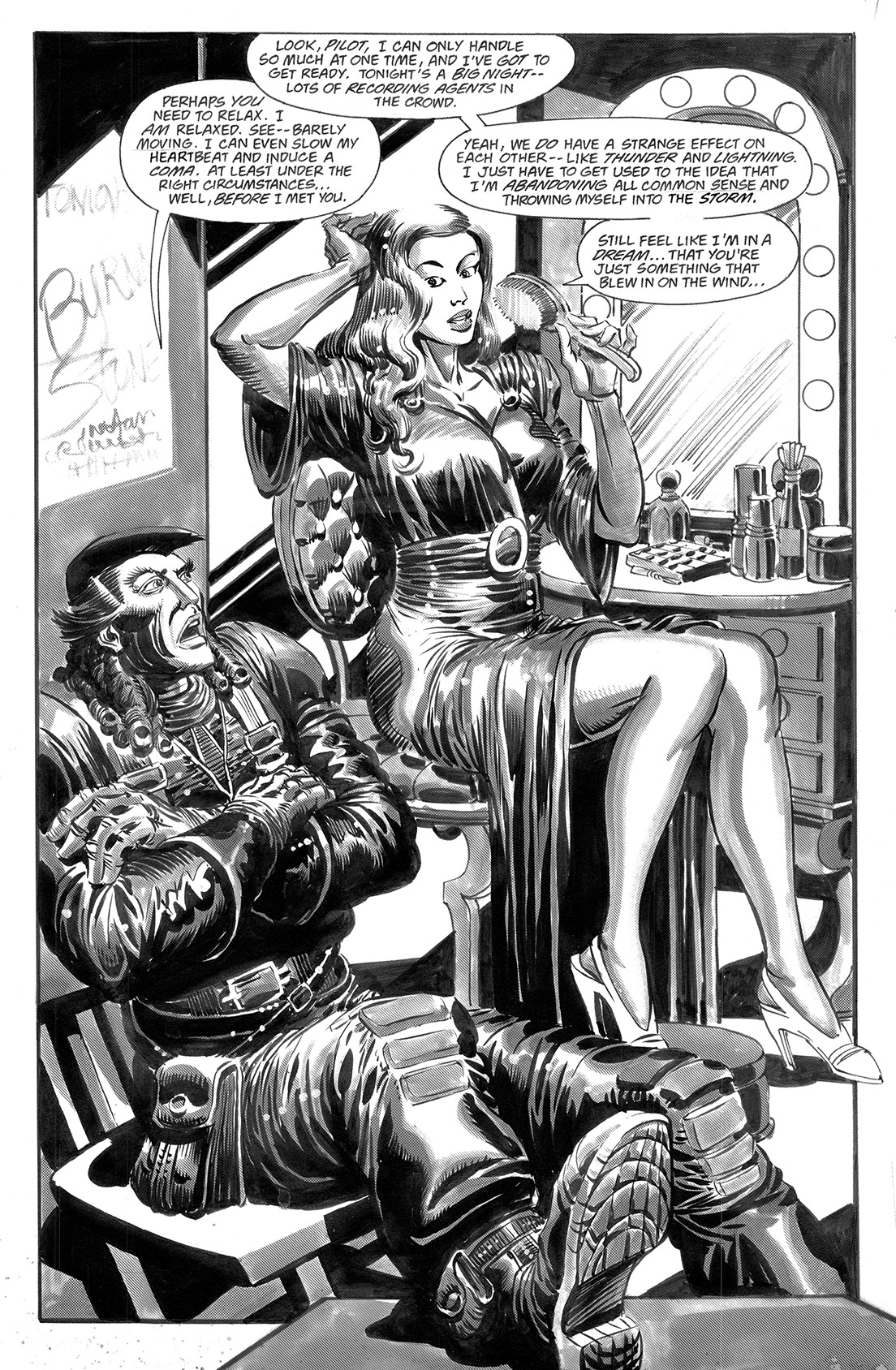
SB: I suppose with the advancements in printing that you’re kind of like George Lucas in that you’re finally getting a chance to see your work remastered in the new graphic novel out now to look the way you originally intended it to.
BZ: Right, it’s almost like the criterion editions of my work (laughs). It’s pretty amazing that back in the 90’s you didn’t think about it. You just accepted the limitations of the materials back then. Paper was sort of a brownish-grey newsprint and the inks were washed out and the blacks were more greyish than deep black. Later in the 90’s, around when Image started to compete in the marketplace, the technology of printing began to evolve and became a slicker, higher quality process. Before that however, when I was doing my books, you just had to live with the fact that it didn’t look that great. Last year Dark Horse reprinted my original Zone Continuum series in a graphic novel format and it was so exciting to see that white, slick paper and really true black. The greys were really lush and the same thing is happening now with Terminal Point. It’s getting this digitally remastered retelling and I had to wait 25 years to see what it really should have looked like. It’s very satisfying.
SB: The Zone Continuum and Terminal Point are like narrative and stylistic cousins due to their roots in Punk Tek. Did they ever influence each other when you originally created them?
BZ: Well I think the Zone Continuum certainly gave me the chance to lay down some of my storytelling ideas and techniques. It was my first comic book series that I was both writing and illustrating using DuoShade. I cut my teeth on the whole process and when I did Terminal Point a couple of years later I wanted to perfect what I had started with Zone Continuum. I also wanted to tell a better, simpler and more accessible story. When I did the Zone books I was in a rambling writing mode creating these shaggy dog stories that weren’t tightly constructed. In retrospect they were sort of hard to follow and understand the basic concepts that would make you enjoy the characters and the story. I wanted to improve on all of those skills with Terminal Point. I also wanted to illustrate the pages even more lushly than what I did in the Zone. My goal was to tell a better, tighter and cleaner story even though the books sound complicated with time travel, control of time and space, future tech vs. past tech, and a love story. I hope that the way the story does unfold to the reader that they are being pulled into it on a simple level that doesn’t get them lost in the narrative.
SB: What do you enjoy more: designing, writing or drawing?
BZ: I think writing is probably the most enjoyable because you don’t have this gigantic labor ahead of you to realize your story. You can create in a sentence or a paragraph entirely new worlds, exotic settings and challenging set-ups relatively quickly whereas illustrating is like carrying bricks. It’s a hard slog everyday and it slows you down to a crawl in your creative process. Writing allows you to get into a fluid stream of consciousness where you flow with the creative process with few impediments. It’s kind of exciting to be free to write and not to draw.
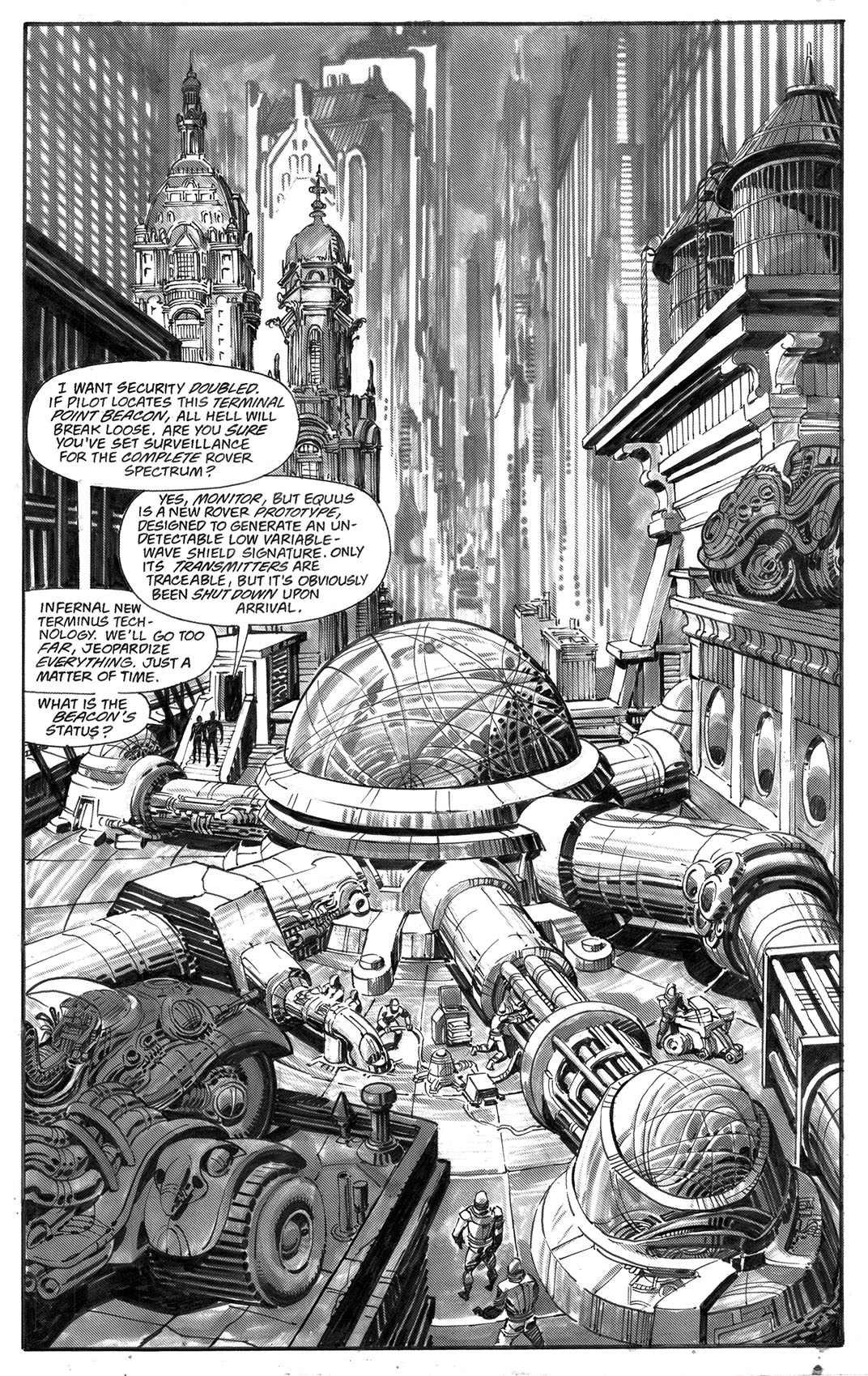
SB: How does it feel as a creator to know that your stories are still relevant almost 30 years later?
BZ: It certainly is reaffirming to look back at your work and to see that it’s still timely. I won’t presume to say that these were classics but with The Zone Continuum I can say that it has achieved a level of cult classic status. The Zone Continuum was about fears of what was happening to the environment and how pollution and technology are basically destroying our world. I didn’t come right out and say that but it came out as a metaphor. I also realize looking back on the Zone that I wrote this idea that you have somebody out in the field running their mission and they’re linked a support team who is guiding them through a computer connection. They are feeding him data, communicating through the headset and they are helping the hero on his mission. I don’t know at the time if I’d seen that a lot in stories and movies but that’s what I put into the comic book. I recently realized that that’s the standard now. The hero is always connected to his team back at their penthouse or high tech suite. The Flash, Green Arrow and Supergirl all use it. I’m not going to presume that I had some premonition about this but it’s nice to know that the concept is being used today. With Terminal Point we still love film noir, and filmmakers and TV shows are always looking for a new way to tell film noir stories. Also the subculture that’s fascinated with steampunk tech has only grown larger. The Zone and Terminal Point were timely and seem like companion books because they work with ideas that are still popular today.
SB: How did Terminal Point end up at Caliber as a graphic novel?
BZ: It’s funny because The Zone Continuum was originally at Caliber and Dark Horse picked it up for the new series. They then acquired the rights to reprint the old Caliber books. When I was doing that I was contacted by Caliber. They were up and running again and wanted to know if there were any stories that I would like to throw at them to reprint in a new graphic novel. I thought that nothing was happening with Terminal Point. I’m doing The Zone but I could get excited about Terminal Point getting a second life. Caliber agreed to publish it and it’s sort of like a revolving door between Caliber and Dark Horse reissuing old material and doing new material based on the old stuff.
SB: On Twitter you’ve teased that there might be some new projects coming out at Dark Horse. Can you give us some more details about what they might be?
BZ: I’ve finished a 120 page new series with Dark Horse. I finished it a year ago and I’m just waiting for them to schedule it. It may first start appearing in Dark Horse Presents and the project is called Legends of Lemaria. For me it’s a completely new kind of story. It takes place in a purely fantasy sort of world. There’s a weird kind of primeval punk tech feel to it but there is no real technology, machinery wise, but there is a sort of crustacean kind of technology in this underwater world. I took the idea of taking Jurassic Park or any type of dinosaur era story but basing it underwater. There are the kind of primordial Jurassic type of creatures that you don’t normally get to see in land based stories of that time period. I get to recreate a whole new Jurassic world, not sticking very closely to scientific fact or National Geographic, but going off in weird tangents with it. It’s very simple storytelling and is underwritten compared to anything else I’ve ever done. I’m relying much more on visuals and less on the written work. It’s a great new exercise for me to make the leap into a new way of telling stories.
SB: Will there be more Zone Continuum or Terminal Point after Lemaria?
BZ: I just started on the next Zone Continuum book. I have to nail down the logistics of when it will come out. I’m still fighting to have it come out as a four issue comic book as opposed to a graphic novel but it’s definitely happening. With regards to another Terminal Point it will most likely depend on sales of the graphic novel to justify a new comic series. I have though just had contact last week from a film studio that’s interested in Terminal Point. I think that’s sort of what you hope for. You don’t expect to make money from comic books but maybe it’ll get licensed and then that really pumps some fresh blood into it and reboots it in a new and exciting way.


